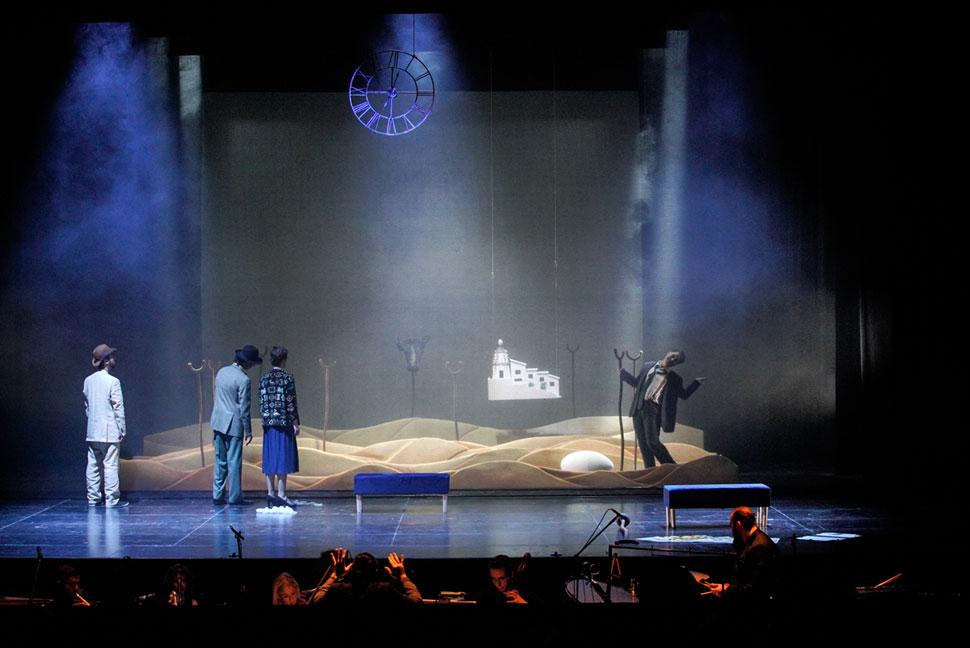El sueño de Dalí en una noche de Picasso (2018, 20’) world premiere
Ignacio Ferrando, Jorge Ferrando music and libretto
Irene de Lelio stage direction
Sascha Emanuel Kramer Dalí
Lucas Moreira Cardoso Picasso
Elena Tereshchenko Gala
Enrico Zara Federico
Marco Ferraro Guitar player
Diletta Maria Buschi set and costume design
Moritz Zavan Stoeckle light design
Anna Lazzarini make-up
Marina D’Ambroso, Alessia Toffanin répétiteurs
La Biennale di Venezia production
Rodi, rodi! Morsicchia! La casina chi rosicchia? (2018, 20’) world premiere
Sofia Avramidou music
Cecilia D’Amico libretto
Katrin Hammerl stage direction
Paolo Cutuli A man
Claire Michel de Haas A journalist / A TV presenter
Rosaria Angotti A child / Hansel
Felicita Brusoni A child / Gretel
Anne Wallucks, set design
Moritz Zavan Stoeckle light design
Katrin Hammerl, Anne Wallucks costumes
Anna Lazzarini make-up
Marina D’Ambroso, Alessia Toffanin répétiteurs
La Biennale di Venezia production
Trìstrofa (2018, 20’) world premiere
Elisa Corpolongo music
Ilaria Diotallevi libretto
Irene de Lelio stage direction
Felicita Brusoni Scarterìn Les BonBon / Losünge Bildmage
Claire Michel de Haas Plufghig Lucht / Strippy Sox
Elena Tereshchenko Deus ex Machina
Diletta Maria Buschi set design and costumes
Moritz Zavan Stoeckle light design
Anna Lazzarini make-up
Marina D’Ambroso, Alessia Toffanin répétiteurs
La Biennale di Venezia production
Push! (2018, 20’) world premiere
Alvise Zambon music
Maria Guzzon libretto
Katrin Hammerl stage direction
Francesco Basso Black
Antoin Herrera-Lopez Kessel White
Rosaria Angotti Eve
Paolo Cutuli Assistant
Marco Ferraro Assistant
Anne Wallucks set design
Moritz Zavan Stoeckle light design
Katrin Hammerl / Anne Wallucks costumes
Anna Lazzarini make-up
Marina D’Ambroso, Alessia Toffanin répétiteurs
La Biennale di Venezia production
Ensemble Novecento of the Accademia Nazionale di Santa Cecilia
Francesco Bossaglia conductor
Thanks to Francesco Bossaglia, Sergio Casesi, Giuliano Corti and Lucia Ronchetti for tutoring the projects up to their premiere performance.
In collaboration with Accademia di Santa Cecilia.
